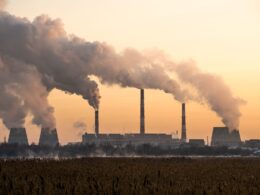Australia faces increasingly frequent and severe climate events that will often occur simultaneously, putting pressure on industries, infrastructure and public services, according to a government report released on Monday.
The assessment, described as the most comprehensive of its kind, found that rising sea levels, intensifying heatwaves and shifts in ecosystems pose escalating risks. It warned that many plants and animals will be forced to move, adapt or face extinction, while millions of Australians could be placed at risk from coastal flooding.
Climate and Energy Minister Chris Bowen said the findings highlighted the scale of the challenge. “No Australian community will be immune from climate risks that will be cascading, compounding and concurrent,” he noted. “Australians are already living with the consequences of climate change today, but it’s clear every degree of warming we prevent now will help future generations avoid the worst impacts in years to come.”
Australia has pledged to cut emissions by 43% by 2030 and to reach net zero by 2050. Bowen said the government would soon announce an “ambitious and achievable” target for 2035.
Opposition leader Sussan Ley accepted the need for emissions reduction but urged the government to avoid “alarmist language”. “Any target must pass two simple tests: it must be credible, and it must be upfront about the cost to households and small businesses,” she said.
The previous conservative government was widely criticised by clean energy advocates for inaction on emissions, and renewable energy projects continue to face pushback from communities and parts of the political establishment.
Australia, a major exporter of coal and natural gas, last week approved its second-largest liquefied natural gas plant to operate until 2070.
The report said Australia has already warmed by 1.2°C above historical levels. If global warming were to reach 3°C, the number of extreme heatwave days would rise from four to 18 annually, while marine heatwaves could extend from 18 days to nearly 200. Deaths from heat in Sydney could surge by more than 400%, and sea levels could rise by 54 centimetres by 2090, threatening the homes of more than three million people in coastal areas.
The analysis also projected significant costs for health services, property markets, food production and disaster recovery.
Alongside the report, the government unveiled a national adaptation plan to coordinate responses to climate impacts. “Our whole country has a lot at stake,” Bowen said. “This report is a reminder, if we needed one, that the cost of inaction will always outweigh the cost of action.”





















